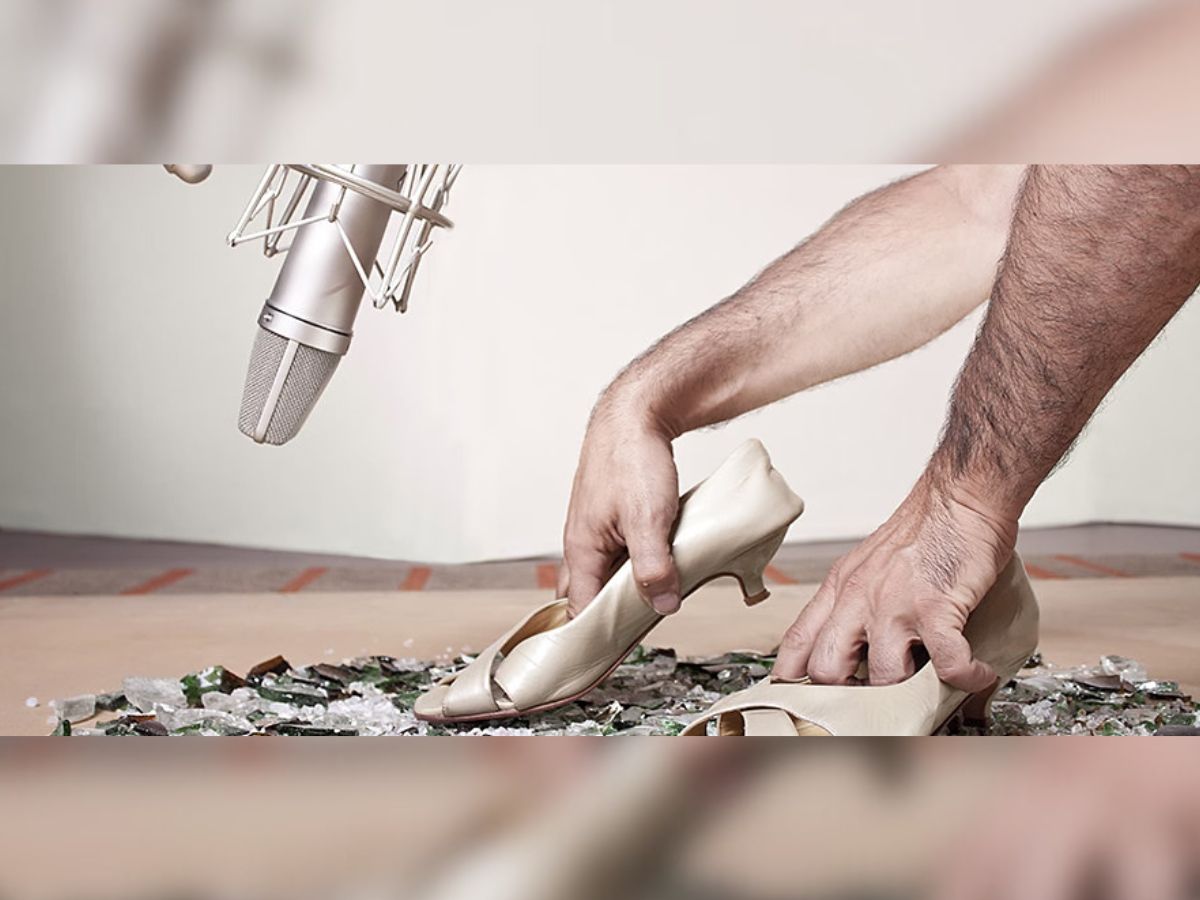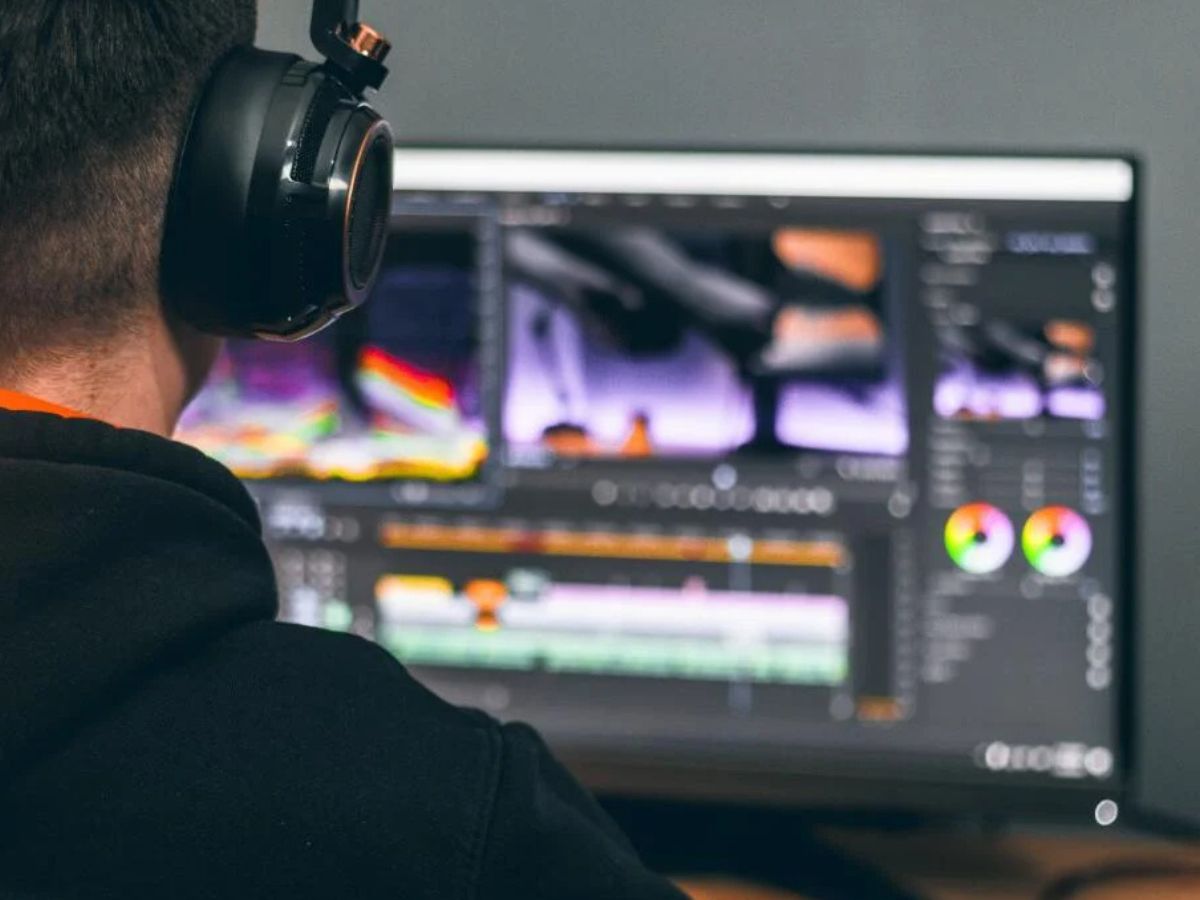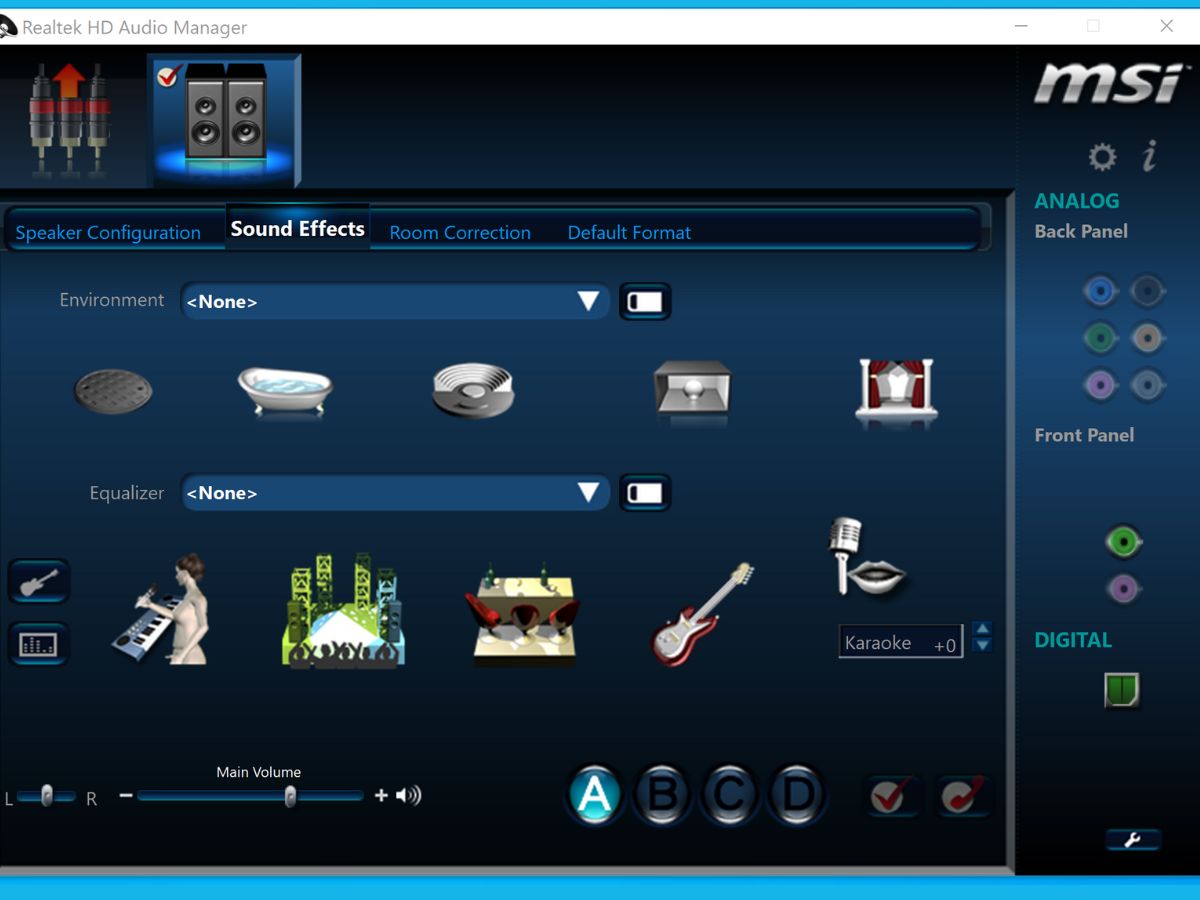Home>Production & Technology>Sound Effects>What Is Making Sound Effects By Making Noise Called


Sound Effects
What Is Making Sound Effects By Making Noise Called
Published: November 20, 2023
Discover the term for creating sound effects by generating noise. Learn more about the art of sound effects and how they enhance audio in various media.
(Many of the links in this article redirect to a specific reviewed product. Your purchase of these products through affiliate links helps to generate commission for AudioLover.com, at no extra cost. Learn more)
Table of Contents
Introduction
Welcome to the world of sound effects, where noise becomes art. Sound effects play a crucial role in the realms of entertainment, from movies and television shows to video games and live performances. They add depth, realism, and emotional impact to visual media, immersing the audience in a rich auditory experience.
But what are sound effects exactly? Simply put, sound effects are artificially created or enhanced sounds used to accompany or emphasize visual elements in various forms of media. They can be as subtle as a gentle breeze rustling through leaves or as thunderous as a roaring explosion. Sound effects have the power to transport viewers and listeners to different worlds, evoke specific emotions, and enhance storytelling.
Whether it’s the subtle sound of footsteps approaching, the swoosh of a superhero’s cape, or the explosive boom of a spaceship taking off, sound effects are carefully crafted to enhance and elevate the overall cinematic experience. They bring scenes to life, making them more immersive and engaging.
Sound effects are not limited to the realm of fiction, though. In the world of documentaries, sound effects are used to provide a level of authenticity and enhance the audience’s understanding of the subject matter. For example, the sound of waves crashing against rocks or the chirping of birds in a forest can help create a vivid image in the listener’s mind.
Sound effects can also be found in the world of music production. From the percussive elements of a drum kit to the ambient sounds that create atmosphere, sound effects are used to add texture and depth to musical compositions.
In this article, we will explore the different types of sound effects, the importance of sound effects in various media forms, and the techniques used to create sound effects through noise. So, grab your headphones and get ready to dive into the fascinating world of sound effects!
Definition of Sound Effects
Sound effects are audio elements that are artificially created or enhanced to accompany or enhance visual elements in various forms of media. They are used to provide aural cues and add depth, realism, and emotional impact to the overall audiovisual experience. Sound effects can range from simple everyday sounds, such as footsteps or door creaks, to complex and fantastical sounds like laser blasts or alien creature roars.
The primary purpose of sound effects is to create a sense of immersion and enhance the storytelling or communication in a specific medium. They help to bring scenes to life by creating a realistic audio environment or by accentuating key moments or actions. For example, in a horror movie, the sound of a creaking door or a sudden loud noise can heighten tension and evoke fear in the audience. In a video game, sound effects can provide feedback and cues to players, such as indicating the presence of enemies or signaling successful completion of a task.
Sound effects can be categorized into two main types: diegetic and non-diegetic. Diegetic sound effects are sounds that originate from the world of the story or the on-screen action. They are part of the narrative and are heard by the characters within the fictional world. For example, the sound of a car engine in a chase scene or the footsteps of characters walking in a forest are diegetic sound effects. Non-diegetic sound effects, on the other hand, are sounds that exist outside the world of the story and are added for dramatic effect or to enhance the viewer’s experience. These can include music, narration, or sound effects that are not explicitly heard by the characters.
Sound effects can be created in a variety of ways. They can be recorded in the real world using specialized equipment such as microphones and field recorders. Common everyday objects can be used to create unique and unconventional sounds. For example, a squeaky toy can be used to simulate a door hinge or a crinkling plastic bag can be used to create a sound effect of a fire crackling. In addition to recording real-world sounds, sound designers and editors also rely on libraries of pre-recorded sound effects that can be used and manipulated to fit the specific needs of a project.
With advancements in technology, sound effects can also be created and manipulated digitally using specialized software and plugins. This allows for greater control and flexibility in shaping and customizing sounds to suit the specific requirements of a project.
Overall, sound effects are a vital component of the audiovisual medium, enhancing the storytelling, creating immersion, and evoking emotions in the audience. They are the secret ingredient that adds depth and realism to the on-screen or on-air experience, making it more engaging and memorable.
Different Types of Sound Effects
Sound effects come in a wide variety of types, each serving a specific purpose in enhancing the audiovisual experience. Here are some of the different types of sound effects commonly used in various forms of media:
- Foley Sound Effects: Foley sound effects are sounds that are created and recorded using various props and materials in a controlled studio environment. These sounds are typically used to enhance the realism of on-screen actions, such as footsteps, clothing rustling, or object interactions. Foley artists use their expertise and creativity to recreate sounds that match the visual elements of a scene to make it feel more authentic.
- Ambience Sound Effects: Ambience sound effects are used to create a sense of place and atmosphere within a scene. They include background sounds such as city traffic, forest noises, or the bustling of a crowded marketplace. Ambience sound effects help to establish the setting and immerse the audience in the environment being depicted.
- Impact Sound Effects: Impact sound effects are used to emphasize moments of impact or action, such as punches, explosions, or collisions. They add a visceral impact to the visuals and enhance the overall intensity of a scene. Impact sound effects can range from subtle and realistic to exaggerated and stylized, depending on the desired effect.
- Environmental Sound Effects: Environmental sound effects are sounds that occur naturally in the environment and contribute to the overall ambiance. These can include sounds like rain, wind, or waves crashing on the shore. Environmental sound effects help to create a sense of realism and enhance the immersive experience.
- Musical Sound Effects: Musical sound effects are sounds that are used to enhance the emotional impact of a scene or to emphasize specific moments. These can include stingers, crescendos, or atmospheric musical elements. Musical sound effects help to create a mood, evoke emotions, and enhance the storytelling.
- Sci-Fi Sound Effects: Sci-Fi sound effects are used in science fiction and fantasy genres to create futuristic or otherworldly sounds. These can include sounds like laser blasts, spaceship engines, or alien creature vocalizations. Sci-Fi sound effects help to transport the audience to fantastical worlds and enhance the otherworldly elements of a scene.
These are just a few examples of the different types of sound effects that are used in the world of audiovisual media. Each type serves a specific purpose in enhancing the overall audio experience and contributes to the storytelling, emotional impact, and immersion of the audience.
The Importance of Sound Effects
Sound effects play a crucial role in the audiovisual medium, enhancing the overall experience and capturing the attention of the audience. Here are some reasons why sound effects are important:
- Enhancing Realism: Sound effects add a layer of authenticity and realism to the visuals. They help to create a believable and immersive audio environment that complements the on-screen action. For example, the sound of footsteps on different surfaces or the ambient noise of a bustling city street can make the audience feel like they are right in the middle of the scene.
- Aiding Storytelling: Sound effects help to convey important information and cues to the audience without relying solely on visuals. They can indicate the presence of a character or object off-screen, create suspense or tension, or highlight specific moments. For example, a tense scene in a thriller movie can be intensified through the use of heartbeat-like sound effects, signaling danger to the audience.
- Eliciting Emotions: Sound effects have the power to evoke emotions and enhance the intended mood of a scene. A romantic scene can be made more enchanting with soft, melodic background music, while a horror scene can be intensified with eerie and unsettling sound effects. They help to create a visceral response in the audience, making the viewing or listening experience more emotionally impactful.
- Engaging the Audience: Sound effects captivate the attention of the audience and keep them engaged throughout the viewing or listening experience. They add depth and detail to the audio, making the overall presentation more dynamic and engaging. The strategic use of sound effects can heighten suspense, create surprise, or draw focus to specific elements, ensuring that the audience remains fully involved in the narrative.
- Providing Feedback and Cues: In interactive media, such as video games, sound effects serve as important feedback mechanisms. They provide cues and information to the player, indicating successful completion of tasks, alerting to potential dangers, or guiding through the gameplay. These cues help players navigate the game world and enhance their overall experience.
Sound effects are an integral part of the audiovisual medium, working hand in hand with visuals to create a multi-sensory experience. They enhance realism, aid storytelling, evoke emotions, engage the audience, and provide crucial feedback and cues. Without sound effects, the world of entertainment would be lacking depth and nuance, making it a much less immersive and captivating experience.
Techniques of Creating Sound Effects through Noise
Creating sound effects through noise requires creativity, resourcefulness, and a keen ear for detail. Here are some techniques commonly used to create unique and captivating sound effects:
- Recording Real-World Sounds: One of the most common techniques is to capture sounds from the real world using microphones and field recorders. This could involve recording sounds of everyday objects, animals, nature, or even human actions. For example, the sound of breaking glass can be achieved by smashing actual glass objects or the sound of a thunderstorm can be captured by recording during a rainstorm. These recorded sounds can be later manipulated and edited to fit the desired effect.
- Experimenting with Unconventional Objects: Sound designers often think outside the box and use unconventional objects to create unique sound effects. Simple household items like a rubber band, a tin can, or even a kitchen utensil can be used to produce interesting sound textures when struck, rubbed, or manipulated in different ways. These unexpected sources can result in captivating and unconventional sounds that bring a fresh and unique element to the sound design.
- Using Foley Techniques: Foley is a technique where sound effects are created and recorded using various props and materials in a controlled studio environment. By recreating actions and movements with specific props, such as footsteps on different surfaces, cloth movements, or object interactions, Foley artists can capture realistic and detailed sounds to enhance the on-screen actions. This technique ensures a high level of accuracy and specificity in sound effects creation.
- Utilizing Synthesis and Sound Design Software: With advancements in technology, sound effects can also be created and manipulated digitally using synthesis and sound design software. Software synthesizers, samplers, and plugins allow sound designers to create and shape sounds from scratch, giving them complete control over every aspect of the sound. This technique offers endless possibilities for creating unique and otherworldly sound effects that cannot be easily captured in the real world.
- Layering and Manipulating Existing Sounds: Another technique is layering and manipulating existing sound recordings or pre-existing sound effect libraries. By combining and modifying different sounds, sound designers can create complex and rich soundscapes. For example, a single sound of a gunshot can be layered with other elements like reverb, echo, and impact sounds to create a more impactful and dynamic effect.
Sound effects through noise creation is a collaborative and iterative process that relies on the expertise and creativity of sound designers, editors, and engineers. By combining different techniques and thinking outside the box, they can create sound effects that enhance and elevate the audiovisual experience, bringing scenes to life and immersing the audience in captivating soundscapes.
Conclusion
Sound effects are a fundamental element of the audiovisual medium, adding depth, realism, and emotional impact to various forms of media. Whether in movies, television shows, video games, or music production, sound effects play a crucial role in engaging and captivating the audience.
From Foley techniques and recording real-world sounds to using unconventional objects and digital synthesis, there are numerous techniques employed to create unique and compelling sound effects. The artistry and creativity of sound designers and editors bring scenes to life, immersing the audience in a rich auditory experience.
Sound effects enhance realism by capturing everyday sounds and creating a sense of place and atmosphere. They aid in storytelling by conveying information, evoking emotions, and engaging the audience with a multi-sensory experience. These effects provide feedback and cues in interactive media, guiding players through games and heightening their immersion.
Creating sound effects through noise requires a combination of technical skills, resourcefulness, and a keen ear for detail. Sound designers use a variety of techniques, from recording real-world sounds and using unconventional objects to utilizing Foley techniques and digital sound design software. Through layering and manipulation, they craft unique and compelling soundscapes.
In conclusion, sound effects are an integral part of the audiovisual medium, bringing visuals to life and enabling the audience to become fully immersed in the world of the story. With their ability to enhance realism, aid storytelling, evoke emotions, engage the audience, and provide crucial feedback and cues, sound effects play a vital role in creating captivating and memorable audiovisual experiences.











